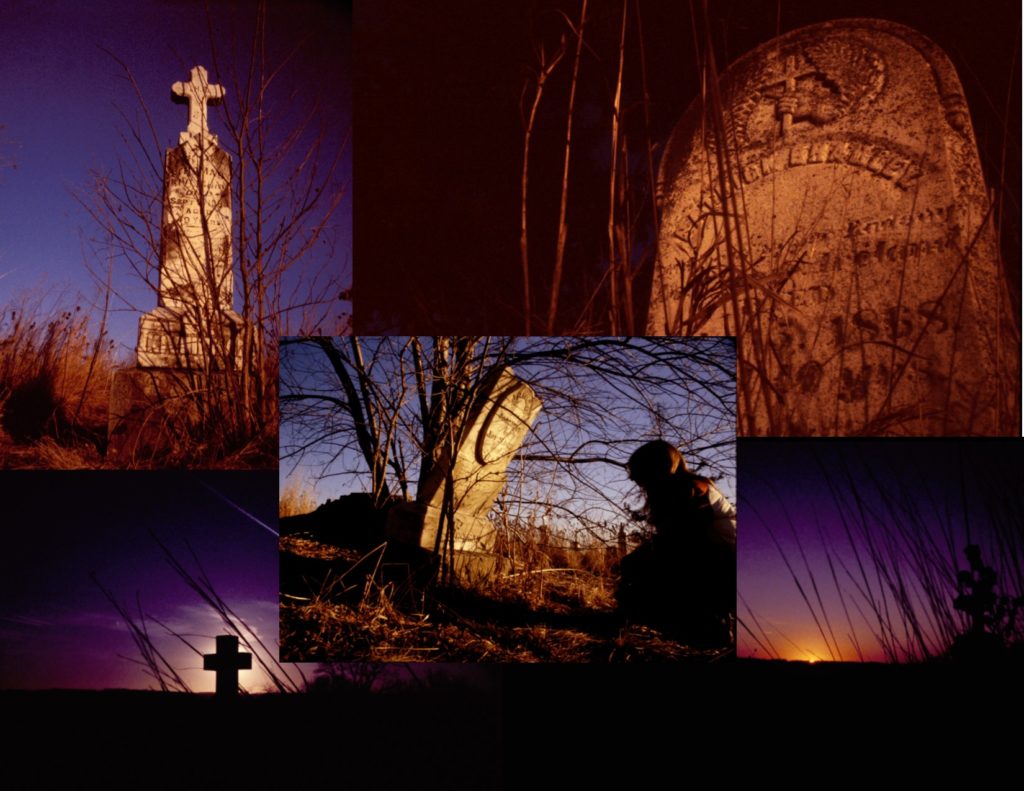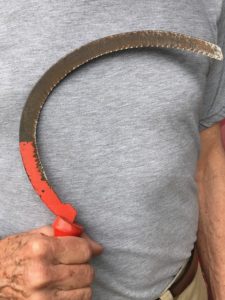Requiem for a Prairie

Sunset in the old cemetery.
While driving the Black Diamond road on an autumn day in 1978, I noticed the color and texture of native prairie on a distant hilltop. Checking it out revealed an old cemetery, which had been abandoned for some time. A few daylilies and peonies were holding their own, but the natives were still clearly in control. The dates on the stones said that most of the residents had returned to the ground in the late 1800s, and the most recent burial I noticed was 1904.
At that time, my older kids were in Middle School at Cosgrove, a few miles away, and had an outstanding teacher named John Stiles, who could weave lessons together into a fascinating fabric. The two of us walked the cemetery together and came up with a prairie-pioneer lesson plan that included a field trip and activities at the cemetery. A week later the kids gathered some seed, did some botanizing, made some tombstone rubbings, studied the names, dates, and weathering of the stones, etc.
I was assistant teacher for the day and brought along a few props. The favorite was a bison femur, which had been snapped and offset by a musket ball, and the offset had healed that way. The evidence for that was the lead ball still embedded in the bone.
Photo: The messy rehealed bone, I’m pointing to the musket ball.
Some of the children recognized family names on the headstones and shared their class’s activities with their parents and grandparents, and then later brought back family stories about their ancestors’ lives in horse-drawn days. John capitalized on these and wove in family histories, genetics, immigration, Indians, Little House on the Prairie, etc. into the classroom discussions and readings.
John and I congratulated each other on how well it had unfolded and were considering a repeat October field trip for the next class. Little did we know what was happening behind the scenes. I visited the cemetery the following August and didn’t recognize it. The prairie had been mown and re-mown to an inch high sward, the stones had been reset and aligned into stiff rows, the ant hills were leveled, and plastic flowers had been set in plastic pots.

My “women’s sickle”
We learned that the old families had become embarrassed over their neglect, especially having it brought to their attention by their children and grandchildren. But I think it ran deeper than that. The early settlers had fought the prairie all their lives, beat it into submission, and forced it to produce something new. Subconsciously their descendants may sense defeat if they allow the prairie to dominate these graves, as if their old enemy had finally won after all.
How could I have not foreseen that this would happen? When I was young, my dad and several other men were the committee that maintained our church cemetery back near Niagara Falls, and we kids were usually recruited. I had a small slender “woman’s sickle” that I kept really sharp, and in that era before string trimmers and weedwackers, I would flick it around the base of headstones to cut back grass and weeds that the mowers couldn’t access. And occasionally we did shovel work when a stone was noticed to be leaning. So of course the Iowa owners would clean up their prairie cemetery.
Aldo Leopold offered his requiem for a destroyed prairie remnant in his Sand County Almanac:
“This is one little episode in the funeral of the native flora, which in turn is one episode in the funeral of the floras, of the world. Mechanized man, oblivious of floras, is proud of his progress in cleaning up the landscape on which, willy-nilly, he must live out his days.”


